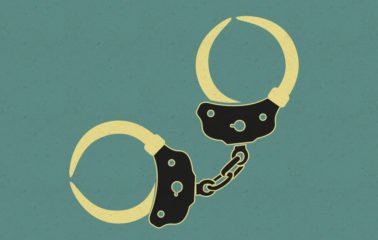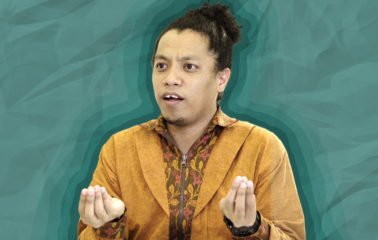
How well you know about the bureaucracy of Forest and Land Governance in Indonesia? It seems like a tough question, but is very important. So let’s take a closer look.
To actualize a good Forest and Land Governance, we need an integrated, transparent, and accountable bureaucratic system; including spatial planning, law enforcement, and monitoring. Therefore, some institutions designated to take care of it. The goal, indeed to ensure that forest’s benefits can be felt by society by regarding the preservation of the environment and its sustainability in the future.
Based on Law No. 32/2009 about Protection and Management of the Environment, Presidential Decree NO. 16/2015 (Articles 2, 3, 4), Ministry of Environment and Forestry Policies No. P.18 / MenLHK-II / 2015 (Section I, II, III), the following are the institutions related to environmental management in Indonesia.
1. Ministry of Environment and Forestry
Led by a minister and directly responsible to the president. Its function is to help the President in the administration of government affairs in the field of environment and forestry. It has some Directorate Generals who take care of different things:
a) Forestry and Environmental Governance Planner
b) Natural Resources and Ecosystems Control
c) Watershed and Protected Forest Control
d) Sustainable Productive Forest Management
e) Pollution and Environmental Degradation Control
f) Waste, Toxic, and Hazardous Material Control
g) Climate Change Control
h) Social Forestry and Environmental Partnership
i) Law Enforcement of Environment and Forestry
2. Environment Agency
Each region/province has its own Environment Agency and it’s responsible to the head of regional/provincial respectively. For example, Environmental Agency in provincial level is responsible to the governor while Environmental Agency in regional/municipal level is responsible to regent/mayor. But they have the same function that is to help the head of their area to protect and preserve the environment in their respective areas autonomously.
3. Ministry of Energy and Mineral Resources
Working closely with MEF in nationwide environmental monitoring by preventing environmental damage caused by natural resource exploitation. MEMR also responsible for the development of new and renewable energy to ensure the clean environment.
4. Peat Restoration Agency
Formed by Government Regulation No. 1/2016, this non-structural institution is responsible to the president and is led by a chief. PRA’s function is to coordinate and facilitate the restoration of peatlands in various provinces in Indonesia: Riau, Jambi, South Sumatra, West Borneo, Central Borneo, South Borneo, and Papua.
5. Geospatial Information Agency
Geospatial is the location or position of the object under, on, or above the earth’s surface which refers to the national coordinate system. Previously, BIG named Coordinating Agency for Surveys and Mapping (Bakosurtanal). In the course of surveying and mapping to provide geospatial information, BIG led by a chief who is responsible to the President through the coordination of the Minister of National Development Planning.
6. Ministry of Agrarian Affairs and Spatial Planning/ National Land Agency
Functions as drafted and implemented national policy in the field of spatial planning, agrarian affairs/land infrastructure, agrarian affairs/land legal relationships, agrarian affairs/land arrangement, land acquisition, space utilization and land control, problems of agrarian affairs/land, as well as the use of space and land.
7. Ministry of Internal Affairs
Make rules and enforce policies of national’s asset management. Afterwards, being responsible for the supervision and implementation of these regulations.
8. Ministry of Agriculture
Agriculture is closely related to the environment. Therefore, national’s property and wealth management are Ministry of Agriculture’s responsible, as a representative of the president nationwide.
9. Ministry of Public Works
Responsible for waste water management system and environmental drainage, solid waste treatment, and development of construction services. Its duties include the formulation, establishment, and implementation of policies.
10. National Development Planning Agency
Plans national development as a reference for the establishment of programs and activities organized by the ministries/agencies/local authorities relating to the environment. All activities will be planned through development project investment analysis.
11. Ministry of Finance
Every development, protection, and preservation of environment program need funds. This is the ministry that regulates and is responsible for the formulation and implementation of budget related to environmental programs.
12. Director General of Taxes
The source of funds used for the protection and preservation of the environment comes from the taxes paid by the citizen. In this case, collecting funds from the taxpayer becomes the responsibility of Directorate General of Taxes. So, please obey pay taxes for the sake of development of the country.
13. Corruption Eradication Commission
Although not directly involved in environmental and forestry management, the commission has a position as a counterweight to support the acceleration of forest development through harmonization of policies, law enforcement, and licensing monitoring, and all matters relating to the protection and preservation of the environment. All forms of funds misappropriation will be investigated by the commission.
We need to understand that protection and preservation of the environment is not just the government’s responsibility. You, as the citizen, are also obliged to participate for the sake of environmental sustainability. It’s easy, you can support, supervise, criticize, and report the violation. You can also join a civil organization and actively criticize government policies related to land and forest sector. In that way, every crucial environmental problem can be solved quickly, due to the cooperation and communication between citizen and the government.




